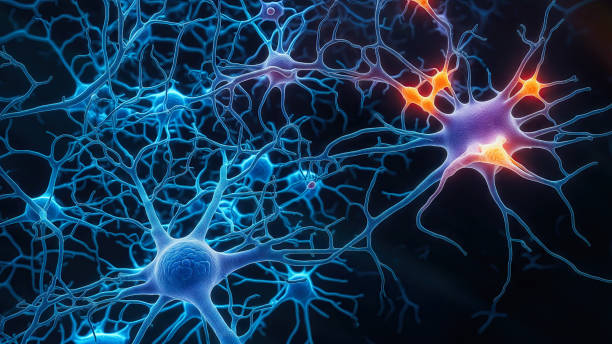Hormones are the silent conductors of our body’s symphony. They dictate everything from when we wake up in the morning to how we digest our food, how we respond to stress, how we menstruate, whether we can conceive, how we sleep, and even how we feel in our own skin. When our hormones are in harmony, we may not even notice them. But when something is off—when cortisol spikes at the wrong time, when estrogen runs rampant, when progesterone dwindles, when thyroid hormones lag—our bodies whisper, then scream, in protest.
Symptoms of hormonal imbalance don’t always wear a name tag. They can look like chronic fatigue, unexplained weight gain, irregular periods, mood swings, insomnia, brain fog, thinning hair, digestive troubles, or fertility issues. It’s easy to chalk these symptoms up to stress or aging, but more often than not, they’re a cry from our endocrine system, begging for balance.
And while modern medicine can offer tests, therapies, and interventions, there’s a timeless practice that quietly supports hormonal harmony from within: yoga.
Yoga as an Endocrine Ally
Yoga is not just about contorting your body into impossible shapes or mastering breath-holding techniques. At its core, yoga is a deeply integrative practice that nurtures the nervous system, boosts circulation, enhances lymphatic flow, and most importantly, calms the mind. These effects ripple through the endocrine system like a gentle tide, restoring communication between glands and bringing chaotic hormone levels back to center.
The endocrine system is a finely tuned network of glands—including the pituitary, hypothalamus, thyroid, adrenals, pancreas, ovaries, and testes—that secretes hormones to regulate the body’s internal environment. What makes yoga especially effective is that it impacts this entire system through multiple channels: physical postures (asanas) that stimulate blood flow to hormone-producing organs, breathwork (pranayama) that tones the vagus nerve and calms cortisol production, and meditation that reduces perceived stress and promotes emotional equilibrium.
The nervous system and the endocrine system are in constant conversation. When the sympathetic nervous system—our fight-or-flight mode—is chronically activated, the adrenal glands pump out cortisol, suppressing reproductive hormones and thyroid function. Yoga disrupts this cascade by activating the parasympathetic nervous system, our rest-and-digest mode, allowing the body to step out of emergency and into balance.
The Cortisol Connection: Yoga’s Antidote to Stress
One of the most damaging hormones in the context of imbalance is cortisol. Designed to keep us alert and responsive in life-threatening situations, cortisol becomes toxic when it’s chronically elevated due to modern stressors—endless deadlines, emotional upheaval, social media comparison, and constant multitasking. Over time, high cortisol levels disrupt sleep, deplete progesterone, increase belly fat, and make us more susceptible to anxiety and depression.
Yoga steps in as a powerful stress modulator. Through breath-led movement, yoga quiets the hypothalamic-pituitary-adrenal (HPA) axis, which governs the stress response. When you flow through gentle sequences or sink into restorative postures, your body begins to switch gears. The heart rate slows. Breath deepens. Muscles relax. The brain receives the message that you are safe. This shift allows cortisol to decline and opens the door for reproductive, metabolic, and thyroid hormones to rebalance.
Research consistently shows that regular yoga practice reduces cortisol levels. Even ten minutes of deep breathing or legs-up-the-wall pose can soothe frazzled nerves and reset the system. Over time, a steady yoga practice acts like a buffering system, making you more resilient to stress and less likely to experience the hormonal rollercoaster it brings.
Thyroid Support Through Alignment and Breath
The thyroid gland is the metabolic powerhouse of the body, controlling how quickly we burn energy, how warm we feel, and how alert we are. Positioned like a butterfly at the base of the neck, the thyroid is incredibly sensitive to blood flow, posture, and stress. Hypothyroidism (underactive thyroid) and hyperthyroidism (overactive thyroid) are increasingly common, especially among women.
Yoga offers thyroid support in a way that’s both direct and subtle. Certain postures—such as shoulder stand, plow pose, and fish pose—gently compress and stimulate the thyroid area, increasing circulation to the gland and enhancing its function. These poses aren’t magic fixes, but when practiced mindfully and consistently, they can encourage the thyroid to return to its natural rhythm.
Beyond physical stimulation, yoga supports thyroid health through its impact on mood and stress. Depression and anxiety are common symptoms of thyroid dysfunction, and yoga helps alleviate both. By reducing systemic inflammation and promoting a sense of calm, yoga creates an internal environment where the thyroid doesn’t have to work overtime to compensate for external chaos.
The Feminine Flow: Yoga for Menstrual and Reproductive Harmony
For many women, hormonal imbalance becomes most evident in their menstrual cycles. Irregular periods, heavy bleeding, painful cramps, missed ovulation, and mood changes are all signs that the endocrine system is struggling to keep up. In conditions like PCOS (polycystic ovary syndrome), endometriosis, and PMS (premenstrual syndrome), the body is caught in a tug-of-war between estrogen, progesterone, and androgens.
Yoga gently nudges the cycle back into flow. Certain poses stimulate the ovaries and uterus, increasing blood flow and relieving pelvic congestion. Twisting postures, hip openers, and gentle inversions help detoxify the reproductive organs, reduce inflammation, and balance estrogen and progesterone levels. When practiced with awareness, yoga becomes a form of self-massage for the endocrine and reproductive systems, releasing tension and improving function.
Equally important is the way yoga builds awareness of cyclical energy. In the yogic tradition, the body is seen as a mirror of nature. Just as the moon waxes and wanes, so too does female energy rise and fall throughout the month. Yoga encourages women to honor this rhythm—to rest more during menstruation, to energize during ovulation, and to restore during the luteal phase. This intuitive alignment with one’s cycle creates a sense of empowerment and hormonal stability.
Perimenopause, Menopause, and Beyond: Yoga for Life Transitions
As women enter their forties and fifties, hormone levels begin to shift. Estrogen and progesterone start to decline, sometimes gradually, sometimes dramatically. These changes can bring hot flashes, insomnia, weight gain, anxiety, brain fog, and emotional turbulence. For many, menopause feels like the unraveling of everything they once took for granted.
Yoga offers a lifeline during this transition. Unlike pharmaceuticals that override symptoms, yoga invites women to move with the changes rather than resist them. Cooling practices like moon salutations, gentle flows, and extended exhalations help manage hot flashes and regulate body temperature. Yin and restorative yoga combat fatigue and sleep disturbances. Breathwork techniques such as alternate nostril breathing balance the hemispheres of the brain and ease emotional swings.
More than symptom relief, yoga for menopause is about reclaiming the body as a source of wisdom, not shame. It reframes the hormonal shift as a rite of passage—an initiation into deeper intuition, creativity, and spiritual insight. With each pose and each breath, women reconnect to their inner power and write a new story for aging—one that is vital, vibrant, and whole.
The Power of Pranayama: Breath as Hormonal Medicine
If yoga is a conversation between the body and the soul, then breath is the language they speak. Pranayama—the art of breath control—is a cornerstone of yogic practice and a profound tool for hormonal healing. Unlike pharmaceuticals that target specific glands, pranayama affects the entire endocrine orchestra, tuning it back to harmony.
Slow, deep breathing immediately activates the parasympathetic nervous system, calming the adrenal glands and reducing cortisol. Specific techniques—like Nadi Shodhana (alternate nostril breathing), Bhramari (bee breath), and Ujjayi (victorious breath)—influence the hypothalamus and pituitary gland, which are the master regulators of hormonal activity. This central control tower then sends refined messages to the thyroid, ovaries, pancreas, and adrenal glands, creating a cascade of balance.
Over time, breathwork rewires our physiological responses to stress. Instead of reacting with panic and hormonal chaos, the body learns to respond with calm and clarity. This shift is not just biochemical but also spiritual. The breath becomes a bridge between our inner world and the vast intelligence of the universe, reminding us that healing doesn’t always require doing more—it often requires simply being present.
Meditation and the Mind-Body Connection
Hormones are profoundly influenced by thoughts, emotions, and beliefs. Anxiety, anger, grief, or resentment can create surges of cortisol, adrenaline, and inflammatory markers. Conversely, feelings of peace, gratitude, and joy increase oxytocin, serotonin, and dopamine—hormones that promote healing, reproduction, and cellular repair.
Meditation is where the hormonal magic deepens. By observing the mind without judgment, we create a space where the body can exhale its defenses. In that stillness, the brainwaves slow, the heart rate drops, and the endocrine system recalibrates. Studies show that regular meditation lowers cortisol and improves insulin sensitivity, reproductive function, and thyroid balance.
Meditation also shifts our relationship with our bodies. Instead of viewing symptoms as enemies, we begin to see them as messengers. This awareness cultivates compassion and patience, essential qualities in any healing journey. Whether you sit in silence, chant mantras, or practice guided visualization, meditation gives you the tools to become your own alchemist—transforming stress into serenity, and imbalance into insight.
Creating a Hormone-Supportive Yoga Practice
There is no one-size-fits-all yoga routine for hormonal health. The most powerful practice is the one that honors your body’s unique rhythms and needs. On some days, your energy may call for a dynamic vinyasa flow that detoxifies and invigorates. On other days, restorative poses may be the medicine your body craves. The key is to listen without judgment and adapt without resistance.
Consistency matters more than intensity. A gentle 20-minute daily practice can be more transformative than an intense 90-minute class once a week. Integrate breathwork, meditation, and mindful movement into your routine. Keep your practice non-competitive and nurturing. Remember that yoga is not a performance—it’s a conversation with your own body’s wisdom.
Modern Science Meets Ancient Wisdom
What makes yoga so potent for hormonal balance is that it doesn’t isolate the endocrine system—it treats the whole being. This holistic approach is increasingly backed by science. Numerous studies have shown that yoga improves menstrual regularity, reduces symptoms of PCOS, enhances fertility, supports thyroid function, alleviates menopausal symptoms, and improves insulin sensitivity in those with hormonal imbalances.
But beyond the research, the real power of yoga lies in how it makes you feel. Yoga helps you inhabit your body again. It teaches you to breathe deeply, to slow down, to feel emotions without being overwhelmed by them, and to trust your body’s innate capacity to heal.
A Final Exhale: Trusting the Intelligence Within
In a world that often encourages us to override our bodies with pills, productivity, and pressure, yoga invites us to do something radically different: to tune in. To rest. To move slowly. To feel.
Hormonal balance isn’t a finish line—it’s a relationship. A conversation between body and mind, inner and outer, effort and surrender. Yoga doesn’t offer quick fixes. It offers deep transformation. One breath, one pose, one conscious moment at a time.
So if your hormones are out of sync, know this: your body isn’t broken. It’s simply calling you home. And yoga, with its ancient wisdom and modern relevance, is ready to meet you there—with open arms, steady breath, and the promise of balance within.






